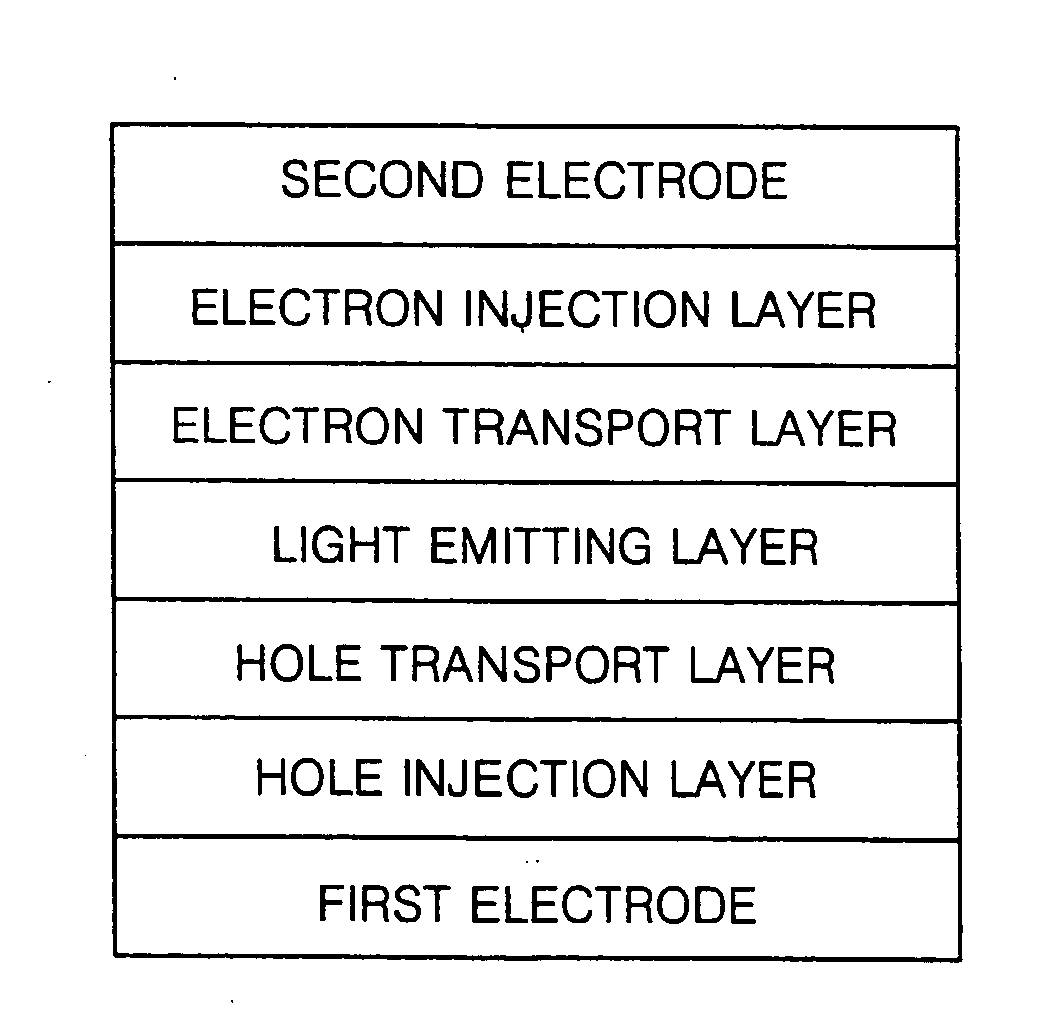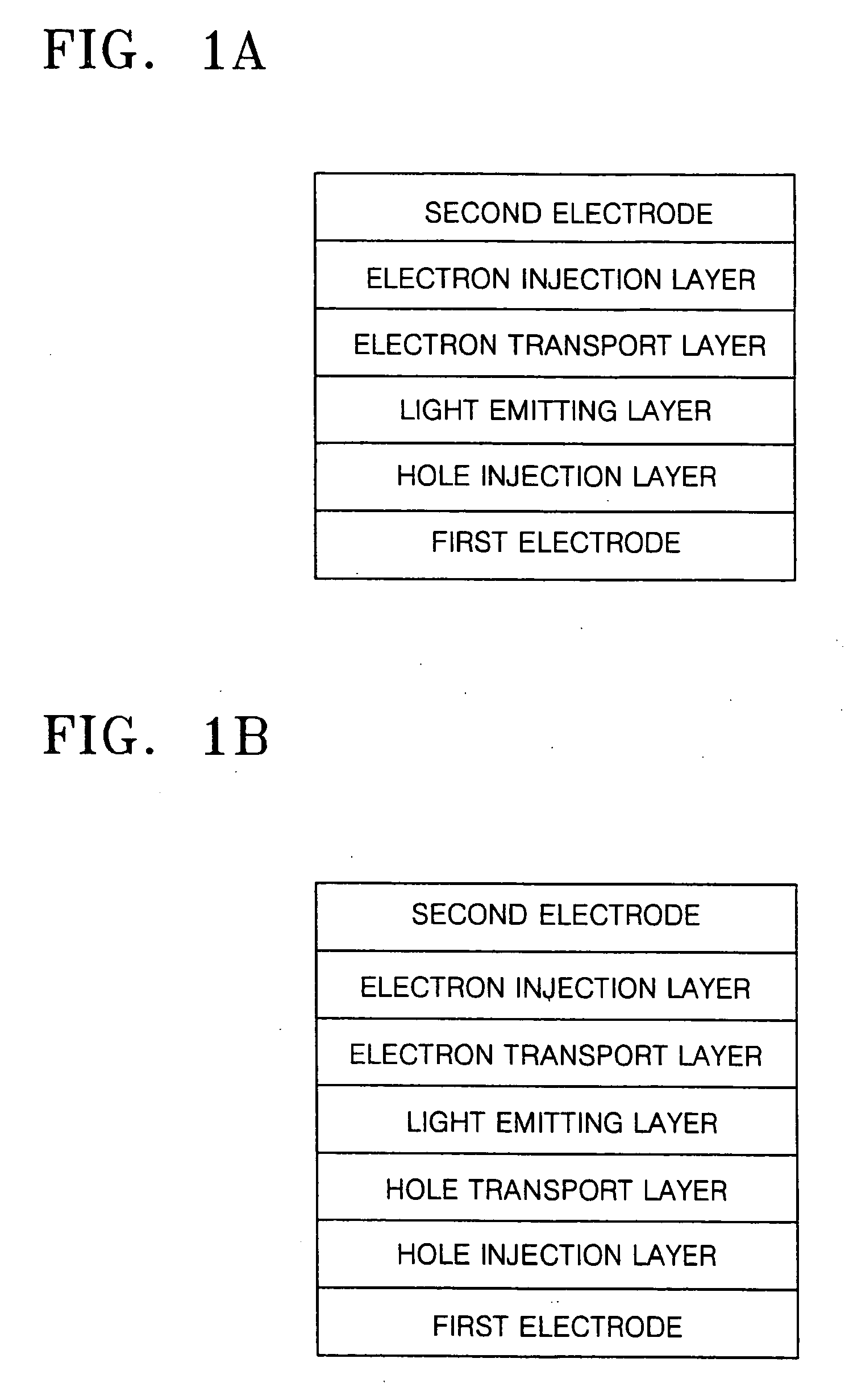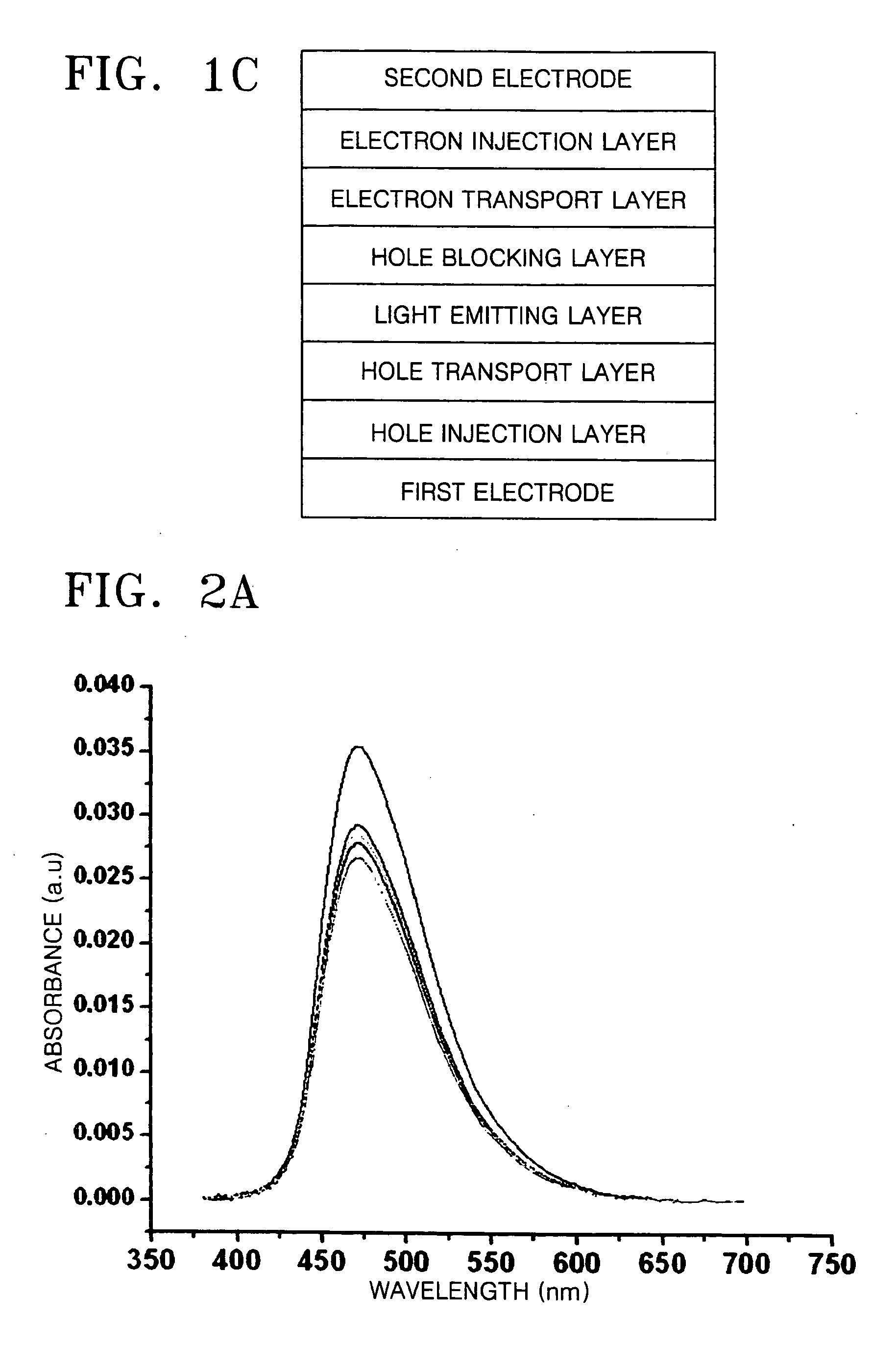Organic light emitting compound and organic light emitting device comprising the same
a light emitting device and organic technology, applied in thermoelectric devices, discharge tube luminescnet screens, fishing, etc., can solve the problems of difficult to obtain a pixel having high resolution, blue light emitting molecules exhibit inferior thermal stability and color purity compared to materials, and achieve excellent solubility and thermal stability, improve operation voltage, and color purity. the effect of high efficiency
- Summary
- Abstract
- Description
- Claims
- Application Information
AI Technical Summary
Benefits of technology
Problems solved by technology
Method used
Image
Examples
synthesis example 1
[0081]According to a reaction path of Reaction Scheme 1, compound 19 represented by Formula 19 was synthesized:
[0082]Synthesis of Compound 19
[0083]Synthesis of Intermediate A
[0084]7.5 g (32 mmol) of 2-bromo-6-methoxynaphthalene, 4.6 g (25 mmol) of phenoxazine, 3.7 g (38 mmol) of sodium tert-butoxide ((t-BuO)Na), 0.3 g (0.33 mmol) of Pd2(dba)3 [(tris(dibenzylidine acetone) dipalladium (0))], and 0.11 g (0.55 mmol) of tri(tert-butyl)phosphine were dissolved in 125 mL of toluene and were reacted for 12 hours at 80° C.
[0085]After the reaction was completed, the reaction mixture was cooled down to an ambient temperature and 200 ml of distilled water was added and quenched. Then, xylene and water were extracted in the volume ratio of 1:1.
[0086]The collected organic layer was dried and concentrated using MgSO4 and a column chromatography was performed using an eluant formed of toluene and hexane in the volume ratio of 1:2. The obtained effluent was concentrated and dried to obtain 6.8 g (Y...
synthesis example 2
[0095]A compound 5 represented by Formula 5 was synthesized:
[0096]A compound 5 represented by Formula 5 was synthesized in the same manner as compound 19 in Synthesis of Compound 19, except that bromobenzene and 1,4-dibromobenzene were used instead of 2-bromo-6-methoxynaphthalene and 1,4-dibromonaphthalene, respectively. Consequently, 75 mg (Yield: 89%) of compound 5 was obtained.
[0097]1H-NMR (300 MHz, CDCl3): δ7.54(d, 4H), δ7.01(dd, 4H), δ6.95(d, 2H), δ6.89(s, 2H), δ6.73(s, 2H), δ6.67 (m, 2H), δ6.62(m, 2H), δ6.58(m, 2H), δ6.48(m, 2H), δ6.46(m, 4H), δ6.42(m, 2H)
synthesis example 3
[0098]A compound 17 represented by Formula 17 was synthesized:
[0099]A compound 17 represented by Formula 17 was synthesized in the same manner as compound 19 in Synthesis of Compound 19, except that diiminobenzyl, 2-bromonaphthalene, and 9,10-dibromoanthracene were used instead of phenoxazine, 2-bromo-6-methoxynaphthalene, and 1,4-dibromonaphthalene, respectively. Consequently, 120 mg (Yield: 75%) of compound 17 was obtained.
[0100]1H-NMR (300 MHz, CDCl3): δ7.91(d, 4H), δ7.55(d, 2H), δ7.51(d, 2H), δ7.44(s, 2H), δ7.39(m, 4H), δ7.23 (m, 2H), δ7.09(m, 4H), δ7.05(m, 5H), δ6.83(m, 2H), δ6.79(m, 2H), δ6.76(m, 4H), δ6.57(m, 2H), δ6.47(m, 2H), δ6.41(m, 2H), δ2.88 (d, 4H)
PUM
| Property | Measurement | Unit |
|---|---|---|
| photoluminescence quantum efficiency | aaaaa | aaaaa |
| thickness | aaaaa | aaaaa |
| temperature | aaaaa | aaaaa |
Abstract
Description
Claims
Application Information
 Login to View More
Login to View More - R&D
- Intellectual Property
- Life Sciences
- Materials
- Tech Scout
- Unparalleled Data Quality
- Higher Quality Content
- 60% Fewer Hallucinations
Browse by: Latest US Patents, China's latest patents, Technical Efficacy Thesaurus, Application Domain, Technology Topic, Popular Technical Reports.
© 2025 PatSnap. All rights reserved.Legal|Privacy policy|Modern Slavery Act Transparency Statement|Sitemap|About US| Contact US: help@patsnap.com



